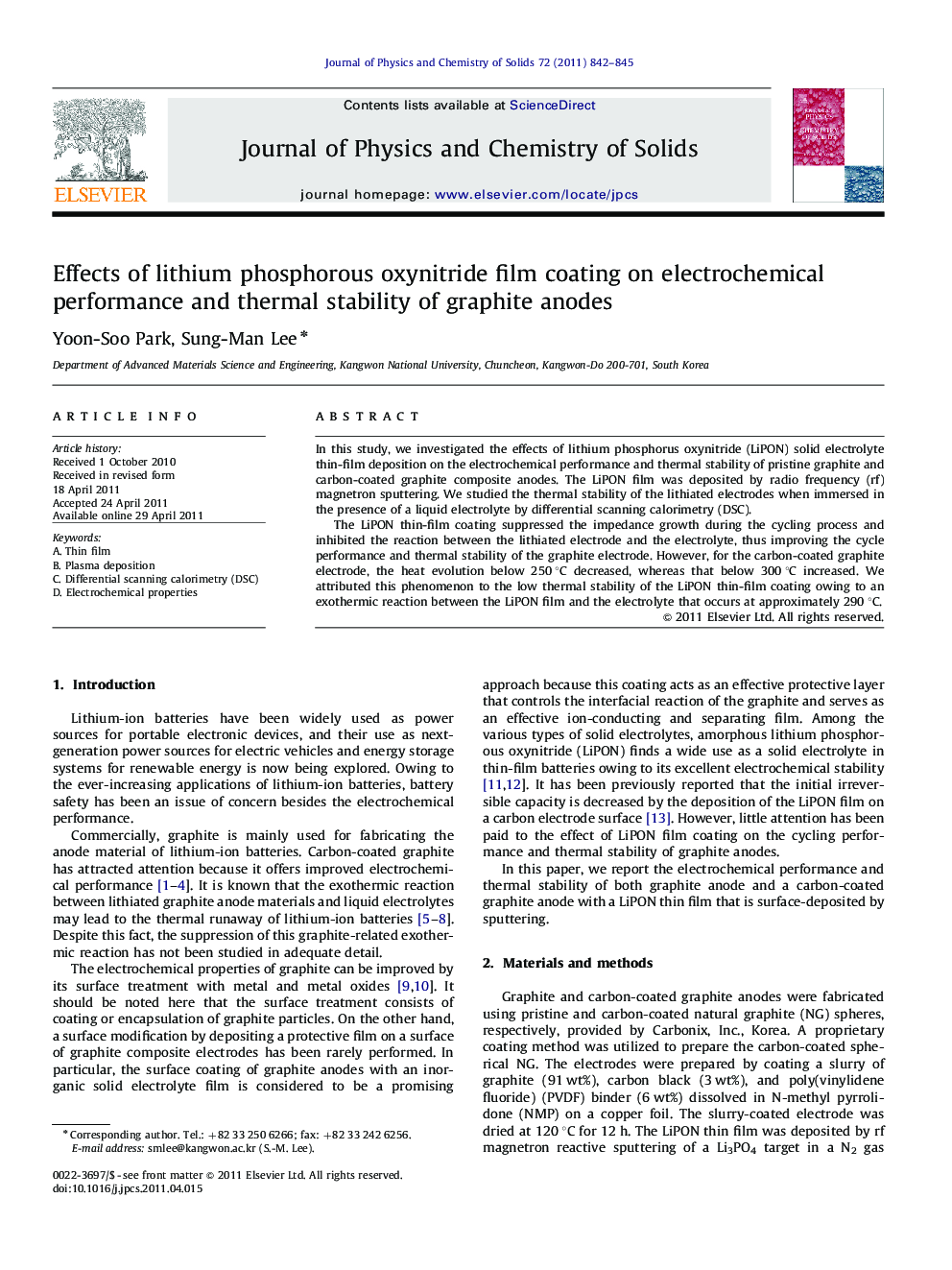| Article ID | Journal | Published Year | Pages | File Type |
|---|---|---|---|---|
| 1517049 | Journal of Physics and Chemistry of Solids | 2011 | 4 Pages |
In this study, we investigated the effects of lithium phosphorus oxynitride (LiPON) solid electrolyte thin-film deposition on the electrochemical performance and thermal stability of pristine graphite and carbon-coated graphite composite anodes. The LiPON film was deposited by radio frequency (rf) magnetron sputtering. We studied the thermal stability of the lithiated electrodes when immersed in the presence of a liquid electrolyte by differential scanning calorimetry (DSC).The LiPON thin-film coating suppressed the impedance growth during the cycling process and inhibited the reaction between the lithiated electrode and the electrolyte, thus improving the cycle performance and thermal stability of the graphite electrode. However, for the carbon-coated graphite electrode, the heat evolution below 250 °C decreased, whereas that below 300 °C increased. We attributed this phenomenon to the low thermal stability of the LiPON thin-film coating owing to an exothermic reaction between the LiPON film and the electrolyte that occurs at approximately 290 °C.
Graphical AbstractFigure optionsDownload full-size imageDownload as PowerPoint slideHighlights► Lithium phosphorous oxynitride film was deposited on the graphite electrode using a sputtering method. ► LiPON thin-film coating improved the cycle performance and the thermal stability of the graphite electrode. ► For the carbon-coated graphite electrode, the heat evolution below 250 °C decreased, whereas that below 300 °C increased. ► There was an exothermic reaction between the LiPON film and the electrolyte at ∼290 °C.
